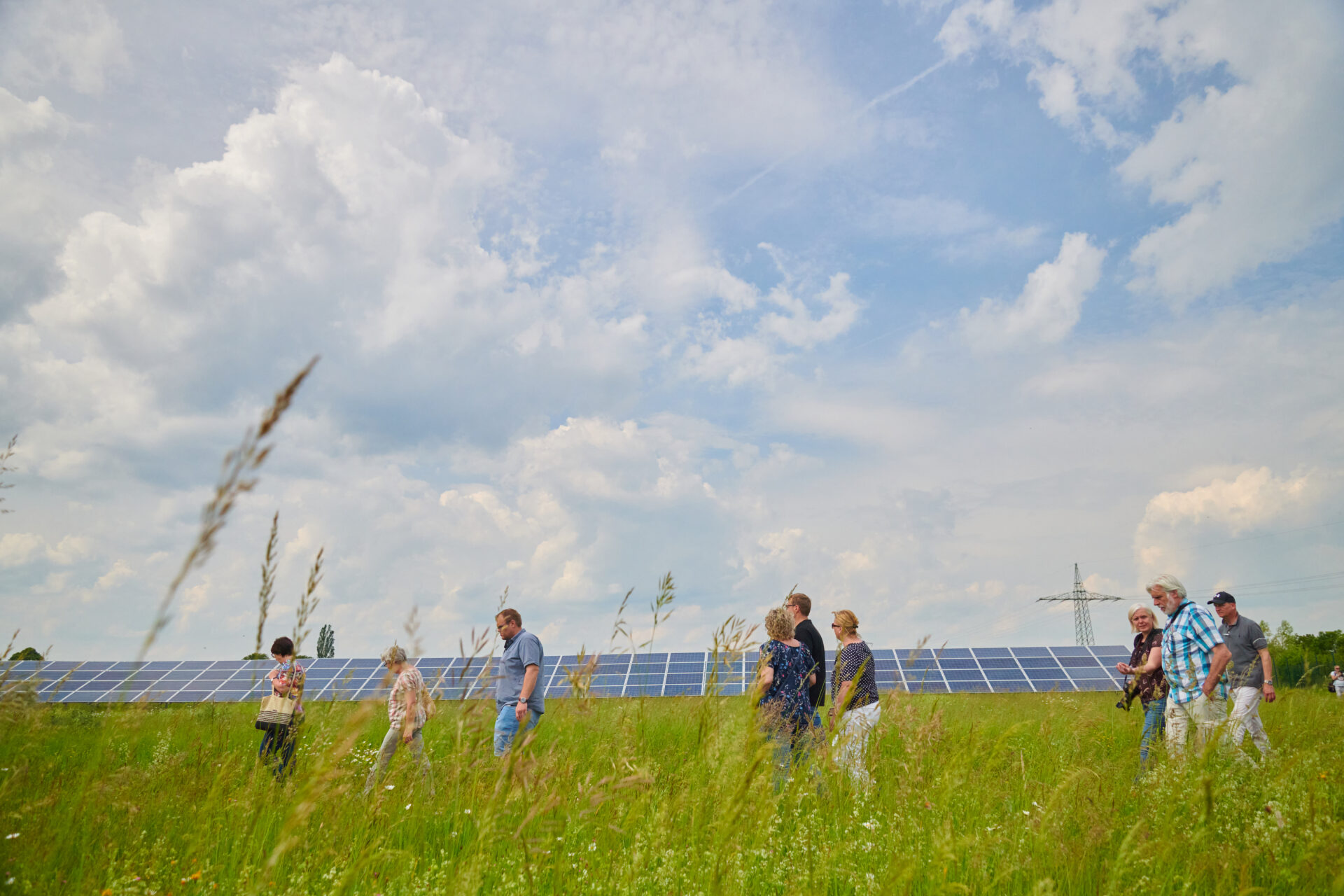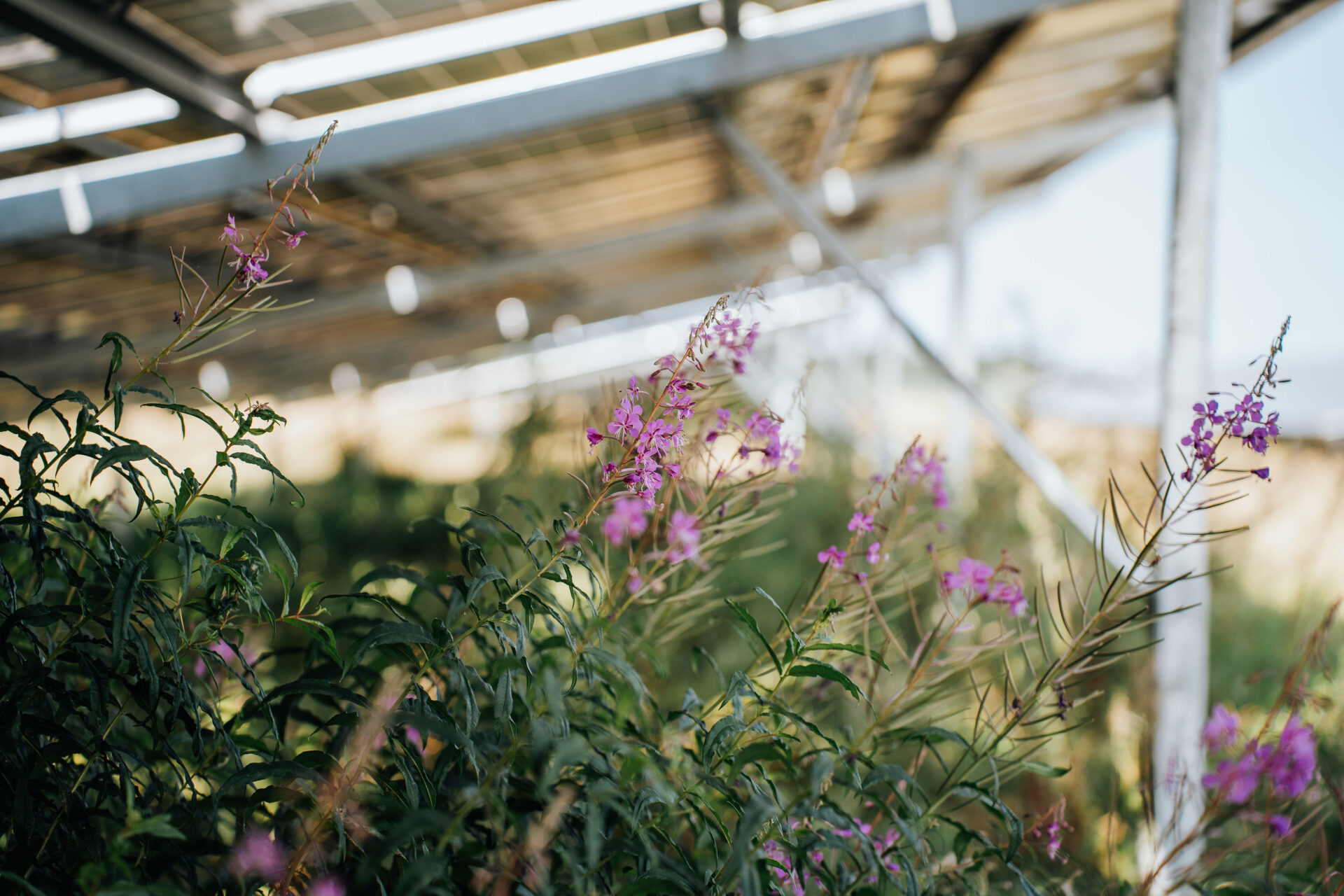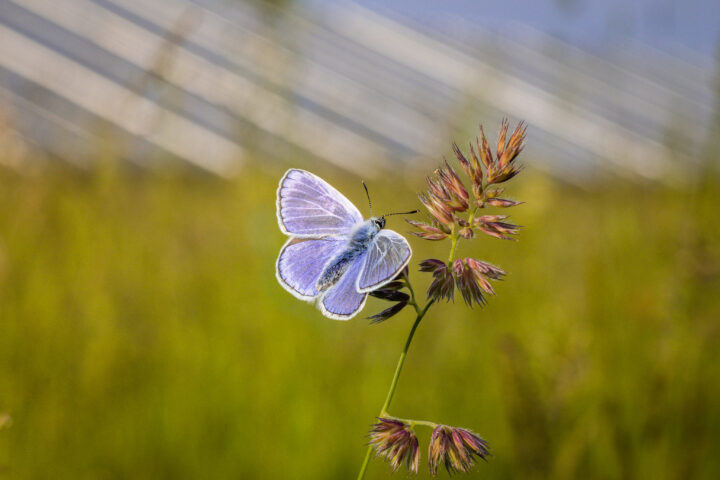Insights into practice: in conversation with Dr Silke Bienroth

Dr Silke Bienroth, Operations Manager for Waste Management in the district of Lörrach (Baden-Württemberg), reports on the creation of what is probably Germany's southernmost solar park. More than 11,000 solar modules supply around 1,300 households with green electricity every year. The "Solarpark am Rhein" in Rheinfelden-Herten went into operation at the end of 2016.
SonneSammeln: What was your initial reaction when the topic of solar parks first came up on the agenda at the district administration office?
Dr Bienroth: My first thought was: Great, but who's going to do it? As a municipal waste management company, we naturally have completely different core tasks, and the installation and planning of such a system is definitely not part of our day-to-day business.
SonneSammeln: And what were your first steps?
Dr Bienroth: For us, the whole thing started in 2011. The trigger was political. There was a motion from Alliance 90/The Greens. Instead of the planned recultivation, a ground-mounted PV system was to be realised on the old landfill site. Almost at the same time, a Freiburg company approached us with the question of whether we could provide an area for the realisation. So it was actually more the planning side that became active. At the same time, we were approached by the then Bürgersolar Hochrhein AG, now Bürgerenergie Dreiländereck eG, which is very well known here in the region for its commitment to renewable energies. That gave the project a real boost. For me personally, a visit to a solar park in our neighbouring municipality was also the trigger. A ground-mounted PV system was opened at the Eichelburg landfill site in mid-2011, and I was invited to attend. I was highly impressed, even a little envious, when the red button was pressed and the little light came on, and thought: It would be nice if we could realise something like that. So there were actually four ideas in total, on the basis of which we wanted and had to start planning.
SonneSammeln: Did all the players agree on how the whole thing would work?
Dr Bienroth: I admit that we tended to be procrastinators at the beginning because it is not a natural site, but a landfill. And we realised that many people were not sufficiently familiar with this site issue. That's why we commissioned an expert opinion from an engineering firm in 2011 to check whether it was technically, legally and economically feasible. We first wanted to know the general conditions. The report showed that the operation was technically and legally feasible, but not economically viable. With the expert opinion came the decision to not build and operate the centre ourselves, but to see if we could find someone who would like to use this space for the installation. An earmarked leasing model was developed and a survey of interested parties was then launched. The three current operators of the plant then got in touch: The three energy cooperatives joined forces and submitted an expression of interest, together with the Freiburg-based company that had already enquired about the technical design. From then on, everything was clear and took care of itself.
SonneSammeln: And what happened with the planning?
Dr Bienroth: We first had to get two approval authorities on board. The town of Rheinfelden as the local authority for the building permit and the Freiburg Regional Council for the landfill permit. This involved changing the original recultivation of the area to use as an open-space PV plant. Everyone was very open to the project application. The town of Rheinfelden was very interested in realising such a plant, which also fitted in well with its energy policy programme. The district of Lörrach was in any case interested in the eea process (European Energy Award) was interested in this. And the Freiburg Regional Council was also very open-minded and granted the waste and landfill licence with a few conditions.
SonneSammeln: What was the reaction of local citizens?
Dr Bienroth: There were no concerns about this site and there was great enthusiasm right from the start. It is an old landfill site - which has of course polluted the neighbourhood for many, many years. The public was immediately enthusiastic that this "old eyesore" would finally be turned into something good. The public was therefore very interested and was also taken on board early on.
"I would recommend everyone to overcome their initial fear of something unfamiliar, to simply take the plunge and get the necessary expertise externally if you don't have it internally."
Dr Silke Bienroth, Operations Manager for Waste Management in the District of Lörrach
SonneSammeln: How did the realisation progress?
Dr Bienroth: What I remember very positively is the enormous speed with which the development plan was amended. It was a sensational process, everyone pulled together and certainly nothing was treated superficially, including nature conservation factors. Of course, it had to be checked: Is there anything to consider on the site? A lizard biotope had already been created at the top of this area. This requirement resulted from the old authorisation for recultivation.
SonneSammeln: This shows that solar parks can be realised much faster than expected. What were the particular challenges of this construction project?
Dr Bienroth: For us as the landfill operator, it was particularly important that the qualified surface sealing was not damaged. Unfortunately, this did happen during the installation of the modules. In the embankment areas, this one-and-a-half metre high layer is somewhat scarcer in places, as we pointed out several times at the time. The damage was repaired, which meant that the foundation did not have to be set quite as deep, but more shallow. In the end, however, everything worked out!
SonneSammeln: Looking back, would you do everything the same way again or which steps would you change from planning to implementation based on what you know today?
Dr Bienroth: With the level of knowledge we have today, I would perhaps take a closer look at whether we could do it ourselves. The project simply made me realise: It is possible! In this case, the district has set a minimum lease amount because these are citizens' energy cooperatives. So we don't earn anything from this plant. Of course, we make savings because the surfaces are now used in such a way that we don't have to deal with the maintenance of these surfaces. In retrospect, I have to say that perhaps we could have been a bit braver and got involved ourselves. The decisive criterion for us in the planning at the time was that we couldn't realise the use of our own electricity. If we had utilised our own electricity, the economic assessment would certainly have been different. As far as the actual planning and realisation is concerned, I don't think we could have done much differently. There were interface problems due to the many parties involved, but overall everything went well.
SonneSammeln: Do you have other areas available for a solar park? Would you actually plan this solar park yourself and not rely on leasing land?
Dr Bienroth: We are definitely only responsible for an area at the Scheinberg landfill site, landfill class 2, which is still in operation. We already have decommissioned old sections there and we are actually considering whether to realise a ground-mounted PV system. The project would be roughly the same size as the current solar park. It would be interesting to utilise our own electricity there. We have some visionary ideas: We use large construction machines on the landfill site, which will be in operation for many decades to come. When hydrogen technology is ready, a model would also be conceivable at the somewhat remote location where hydrogen could be produced from the electricity and used to power the construction machinery. I don't know whether I will be able to realise this in my role, but it would of course be a great idea to use solar energy directly to power the landfill operation.
SonneSammeln: What advice would you like to give other interested parties when planning a solar park?
Dr Bienroth: By all means trust and do it! Get the necessary expertise externally if you don't have it internally. It's a great concept that our district is making the site available to a consortium of three community energy cooperatives on a small lease. I would therefore recommend to every person and every landfill site operator in a similar situation to overcome this initial fear of something new and find ways to realise it.
The interview was conducted by Alina Uppenkamp, Project Manager at SonneSammeln.






